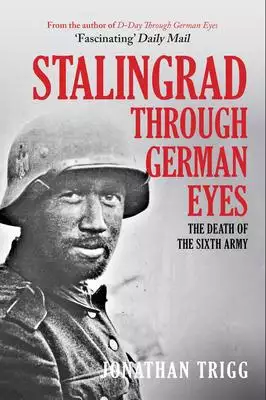Cut off from的問題,我們搜遍了碩博士論文和台灣出版的書籍,推薦Lindsley, J. P.寫的 Fake News, True Story 和Trigg, Jonathan的 The Battle of Stalingrad Through German Eyes: The Death of the Sixth Army都 可以從中找到所需的評價。
這兩本書分別來自 和所出版 。
國立陽明交通大學 電子研究所 林鴻志所指導 葉宇婕的 具有綠光雷射結晶多晶矽通道之T型閘薄膜電晶體射頻特性分析 (2021),提出Cut off from關鍵因素是什麼,來自於薄膜電晶體、多晶矽、雷射結晶、T型閘極、射頻元件。
而第二篇論文元智大學 電機工程學系乙組 邱政男、陳興義所指導 陳昱翔的 具有信號全通傳輸的超寬頻雙向吸收型共模濾波器 (2021),提出因為有 共模濾波器、差動傳輸線的重點而找出了 Cut off from的解答。
Fake News, True Story

為了解決Cut off from 的問題,作者Lindsley, J. P. 這樣論述:
Just out of college, JP Lindsley helmed a juggernaut political organization aimed at elevating conservative journalist and restoring conservative principles. Soon, Lindsley would be hand picked as the successor to Rupert Murdoch. His principles and future were bright. But over the next two years,
he would work side-by-side with Roger Ailes, the head of Fox News, in the heart of the conservative media juggernaut. He would be cut off from his family, isolated from his friends, and have all parts of his life controlled by Ailes and his allies. From the war for small-town America newspapers to
the home of Chuck Norris to the private offices of the most powerful architects of conservative media, Fake News, True Story follows Lindsley's disorienting fall down the conservative-media rabbit hole--and his eventual flight from Ailes and his empire as they sought to destroy him.
Cut off from進入發燒排行的影片
娘が小学生の時にお友達のお家でおやつに出てきた大学芋。あまりのおいしさに娘みずからレシピを教えくださいとお願いして、メモして持ち帰ったレシピです。それ以来、パナソニック ビストロのグリル機能で作ったり、冷凍サツマイモで作ったりと、いろいろなやり方を経て作り続けている洋風大学芋。しみしみしたバターが効いていて食べ出したら止まらないおいしさです。芋好きの娘がイチオシのサツマイモメニューです。
*レシピ*
1.大きめのサツマイモ(450〜500g)1本を小さ目や長めの乱切りにし、10分ほど水に入れアク抜きをする。
2.フライパンにサラダ油 大さじ3を入れる。
3.(1)の水を切り、水気を拭き取りながら(2)に入れる。
4.蓋をし、火を付ける。ピチピチと音が鳴り出したら中火で10分ほど時々、上下を返しながら加熱する。我が家ではコンロに付いている160度の温度センサーをオンにして、7分弱加熱しました。
5.サツマイモに串がスッと通るようになったら、有塩バター 20g、砂糖 45g、醤油 15gを入れ煮詰め、からめる。
6.でけた。熱々がおいしいよ。
#大学芋 #食欲の秋 #簡単レシピ
Daigaku-imo that came out as a snack at a friend's house when my daughter was in elementary school. It was so delicious that my daughter asked her friend's mother to share the recipe with her, and she wrote it down and brought it home. Since then, I have been making it in various ways, such as using the grill function of the Panasonic Bistro and using frozen sweet potatoes. I have been making it in various ways since then, including using the grill function of the Panasonic Bistro and using frozen sweet potatoes. My daughter, who loves sweet potatoes, highly recommends this sweet potato dish.
*Recipe*
1.Cut a large sweet potato (450-500g) into small or long chunks and soak in water for about 10 minutes to remove the lye.
2.Put 3 tablespoons of vegetable oil in a frying pan.
3.Drain the water from (1) and put it in (2) while wiping off the water.
4.Put the lid on and turn on the heat. When you hear a buzzing sound, heat it on medium heat for about 10 minutes, turning it upside down from time to time. In our case, we turned on the 160 ℃ temperature sensor on the stove and cooked for less than 7 minutes.
5.When a skewer goes through the sweet potato easily, add 20g of salted butter, 45g of sugar, and 15g of soy sauce ,boil down and entangle.
6.It's done. It's delicious to eat hot.
具有綠光雷射結晶多晶矽通道之T型閘薄膜電晶體射頻特性分析
為了解決Cut off from 的問題,作者葉宇婕 這樣論述:
本論文中,我們研究具有T型閘極、空氣邊襯及矽化閘/源/汲極多晶矽薄膜電晶體的射頻特性。為了提升多晶矽薄膜的晶粒尺寸,我們使用綠光奈秒雷射來製備厚度為50 nm與100 nm的多晶矽薄膜。結果顯示厚度為100 nm的薄膜能得到等效尺寸大於1 μm的晶粒大小,遠優於50 nm厚的多晶矽薄膜。我們於元件製作時採用了新穎的T型閘極技術,不僅降低元件的閘極電阻,也使電晶體具有比微影技術解析極限更小的閘極線寬,使轉導得以大幅提升。我們也分別利用高溫的快速熱退火及低溫的微波退火來活化源汲極雜質。在通道厚度為100 nm並以快速熱退火進行源汲極活化的多晶矽薄膜電晶體中,對最小通道長度達124 nm之元件,截
止頻率可達59.7 GHz,最大震盪頻率亦可達34 GHz。具有相同通道厚度並以微波退火來活化雜質的電晶體中,當通道長度微縮至102 nm,元件的截止頻率更高達63.6 GHz,最大震盪頻率亦可達29.7 GHz。相較過往文獻報導的多晶矽薄膜元件,我們以微波活化源汲極的薄膜電晶體達到了最高的截止頻率。
The Battle of Stalingrad Through German Eyes: The Death of the Sixth Army

為了解決Cut off from 的問題,作者Trigg, Jonathan 這樣論述:
Jonathan Trigg reveals the human agony behind such statistics through the words of the Germans who were there: ’You’ll regret this insulting, provocative and thoroughly predatory attack on the Soviet Union! You’ll pay dearly for it!’ (Dekanazov, Soviet Ambassador in Berlin). The Germans did. But the
butcher’s bill was huge for both sides. Five months, one week and three days of hell. The German offensive to capture Stalingrad began in August 1942, using the 6th Army and elements of the 4th Panzer Army. The attack was supported by intense bombing that reduced much of the city to rubble. The bat
tle degenerated into house-to-house fighting, as both sides poured reinforcements in. By mid-November, the Germans had pushed the Soviet defenders back at great cost into narrow zones along the west bank of the Volga. On November19, the Red Army launched Operation Uranus, targeting the weaker Roman
ian and Hungarian armies protecting the 6th Army’s flanks. The flanks were overrun and the 6th Army was cut off and surrounded. Hitler was determined to hold the city - the symbolic birthplace of detested Bolshevism - and forbade the 6th Army from attempting a breakout; in February 1943, without foo
d or ammunition, something like 290,000 Germans surrendered. The losses on both sides were stupendous - the Soviets suffered something approaching half a million dead and more than 650,000 wounded or sick - and in his unique style author Jonathan Trigg reveals the human agony behind such statistics
through the words of the Germans who were there. Was it all over after the surrender? Of course not. Death marches did for many: Landser Josef Farber remembered: ’We set out with 1,200 men ... about 120 were alive when we reached the camp.’ Jonathan Trigg has an honors degree in History and serve
d in the British Army, completing operational tours in Northern Ireland and Bosnia, and latterly acting as a military instructor to friendly governments in the Arabian Gulf. He has written extensively, although not exclusively, on the Second World War, specializing in the fighting on the Eastern Fro
nt, and non-Germans who served in the Waffen-SS. A regular expert contributor to all aspects of media, including TV and a range of magazines including History of War, All About History and The Armourer. He also often features on radio; BBC Radio 4, Talk Radio, Newstalk, and in a large number of podc
asts, such as ww2podcast.com, History Hack and History Hit. His previous books include ’Death on the Don: The Destruction of Germany’s Allies on the Eastern Front’ and ’D-Day Through German Eyes’.
具有信號全通傳輸的超寬頻雙向吸收型共模濾波器
為了解決Cut off from 的問題,作者陳昱翔 這樣論述:
本文提出了新穎的缺陷接地結構 (DGS) 的吸收式共模濾波器。前期研究微帶線吸收式共模濾波器,擁有一個超寬的共模雜訊吸收頻帶,頻寬百分比高達131%,且由 3-dB決定的差模訊號截止頻率高達17 GHz。接著透過前期研究延伸,提出帶線超寬頻吸收型共模濾波器,將其共模雜訊吸收頻寬百分比提升至 147%。此外,濾波器由 3-dB 截止頻率決定的差模信號總傳輸頻率高達約 15 GHz,並將濾波器尺寸縮小至1.1%。共模雜訊吸收頻寬和信號傳輸頻寬的表現在過去的文獻中從未實現過。